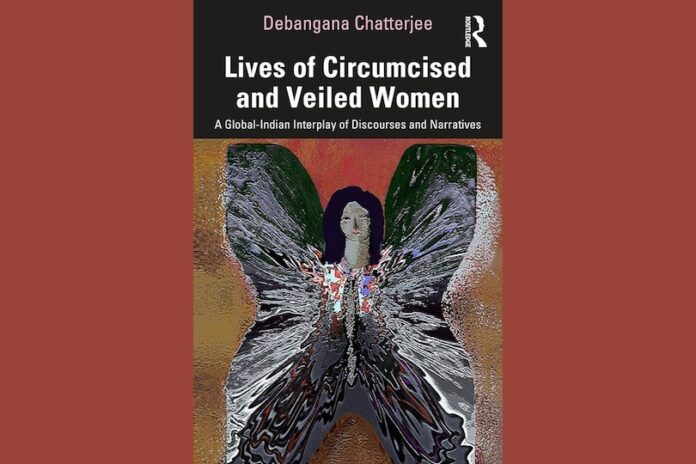Lives of Circumcised and Veiled Women: A Global-Indian Interplay of Discourses and Narratives
By Debangana Chatterjee
Routledge, 2024
Dr. Debangana Chatterjee’s 2024 book expands on the established Feminist IR understanding that the ‘Personal is the International’ (Enloe, 2014, p.343). Dr. Chatterjee provides a detailed analysis of the multiple levels – “family, community, state, and international politics” (p.2) – at which the discourses surrounding the cultural practices of Female Genital Cutting/Female Circumcision (FGC/FC) and Islamic veiling overlap and are constructed. The book delves into the history of these practices and how global discourses shape them, particularly in India with the practices of Khafz and Purdah respectively. It explores women’s agency, the interaction of global and local discourses, and the challenges of cultural practices being viewed through a universal human rights lens. The book offers a nuanced analysis of the hierarchies within IR.
The book is divided into six chapters. The first chapter establishes the theoretical foundation, while the next four chapters analyze the two practices at global and local levels. Chapter 2 explores the historical development of the international conversation around FGC/FC. The subsequent chapters delve into Khafz and Purdah, examining these practices in India and the discourses surrounding them. The concluding chapter synthesizes the findings and contributions of the study to knowledge production and IR as a discipline.
Dr. Chatterjee’s focus on women’s narratives, their experiential accounts, and marginalized knowledges brings forth diverse perspectives through extensive interviews and focus groups. The interdisciplinary approach of the book covers legal and sociopolitical discourses, delving into various implications of Islamic veiling. It also addresses the issue of Othering and how colonial imaginations and cultural traditions intersect.
The book could have delved deeper into the manifestation of international discourses within Indian discourses and the convergence or divergence of these discourses. It could have further explored the concept of the ‘gaze’ throughout the chapters and integrated it more explicitly. Methodological considerations such as incorporating rural women’s narratives or medical professionals’ views could enrich future research.
In conclusion, the book sparks essential conversations on cultural practices, amplifies marginalized voices, and highlights the necessity of integrating global discourses with local perspectives. It contributes to gender and IR literature by emphasizing the importance of an intersectional lens and showcasing how women navigate global and local discourses in their lives. Dr. Chatterjee’s work illuminates how women and their agencies become intertwined in the complex web of global and local discourses, positioning them as key players in political arenas.
References
Enloe, C. (2014) Bananas, Beaches and Bases. 2nd edn. University of California Press.
Spivak, G.C. (2013) ‘Can the Subaltern Speak?’, in P. Williams and L. Chrisman (eds) Colonial Discourse and Post-Colonial Theory : A Reader. New York: Routledge, pp. 66–111.
Further Reading on E-International Relations




